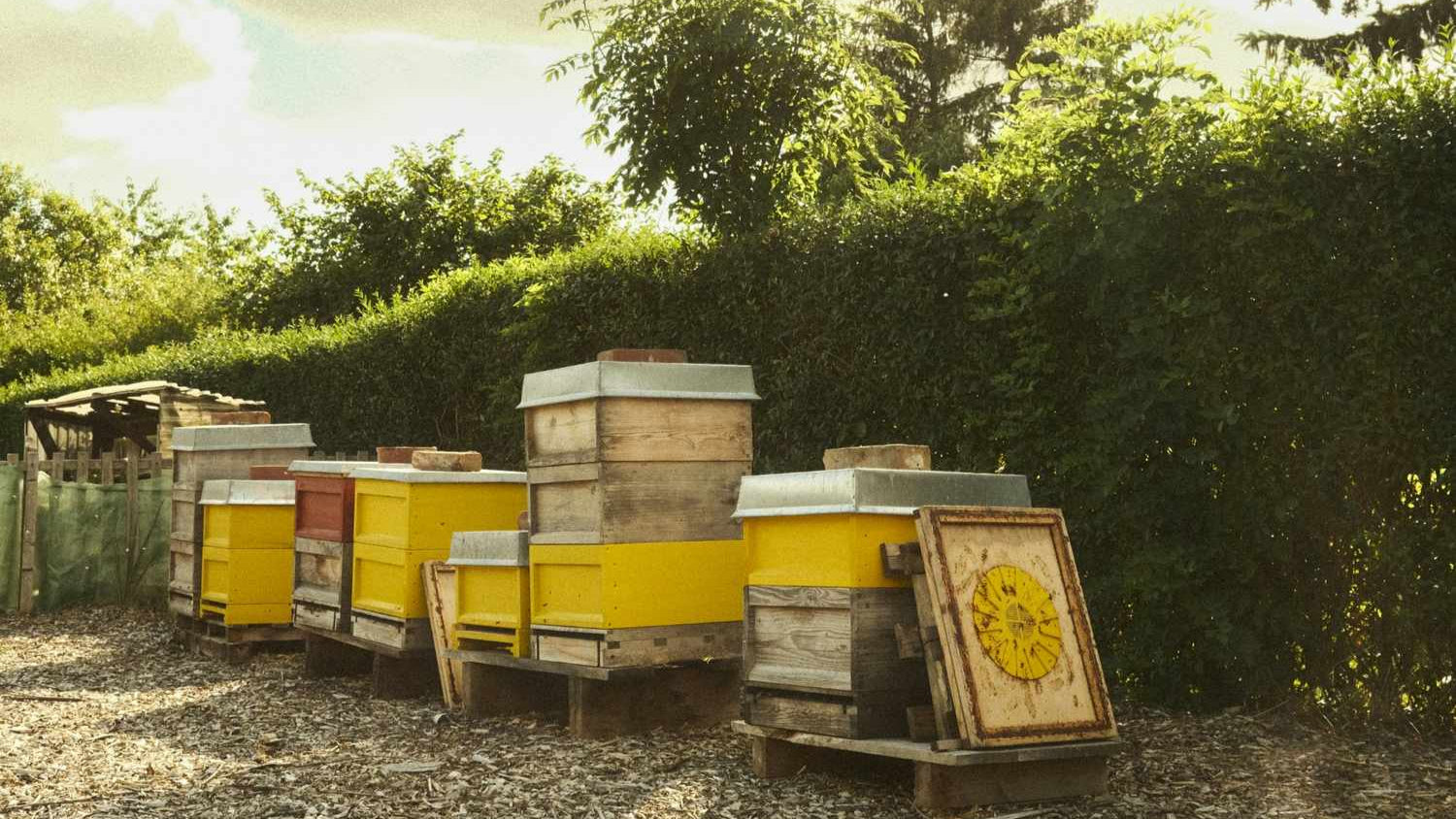
Types of Bees in India: A Firsthand Journey Into Honey, Hives, and Hidden Giants
Table of Contents
-
Introduction
-
The Main Types of Bees in India
-
Living With Bees: Personal Encounters
-
Honey in India: Types, Qualities, and Yields
-
Challenges in Honey Production
-
Why Certain Species Matter for Beekeeping and Conservation
-
Final Thoughts: What I Learned From Bees in India
Introduction
India is home to an incredible diversity of honey bees, each with its own story, strengths, and struggles. As someone who stepped into the buzzing world of Indian apiculture with curiosity (and not a little fear), I quickly realized bees aren’t “just insects that sting.” They’re master architects, medicine-makers, and ecological guardians.
From giant bees that build combs the size of blankets on cliffsides, to stingless mini-bees that give honey drop by precious drop, India’s bee species represent both challenge and wonder. Some yield kilograms of rich honey that tribal communities prize, others produce only a few spoonfuls of honey that Ayurvedic healers call medicine. Together, they shape the types of honey in India that we know and love today.
This blog is both a guide and personal journey into the main types of bees in India, their honey, and what they mean for beekeepers, farmers, and nature lovers alike.

The Main Types of Honey Bees in India
Apis dorsata – The Rock or Giant Honey Bee
-
Found on cliffs, high trees, and forest edges.
-
Builds a single massive comb, visible even from a distance.
-
Produces 30–40 kg of honey per colony in the wild.
-
Nearly impossible to domesticate, highly aggressive.
My first encounter with Apis dorsata was unforgettable: a towering comb in Madhya Pradesh hanging like a honey-soaked curtain. Local honey hunters work at night with fire torches to harvest from these giants, risking their lives for the earthy, sometimes smoky wild honey they produce. This honey isn’t “managed” — it’s respected, sought, and always tied to wilderness.

Apis florea – The Dwarf Honey Bee
-
Colonies on shrubs, hedges, and low branches.
-
Produces only 0.5 kg of honey a year.
-
Migratory and unsuitable for large-scale beekeeping.
At first glance, Apis florea looks harmless – their delicate hives dangle like ornaments on bushes. But they’re flighty: disturb them and they abandon their comb. Their honey is light, floral, and rare, often considered a local delicacy in tribal villages. Beginners may find them fascinating, but they won’t fill a jar.

Apis cerana indica – The Indian Hive Bee
-
Native to India and a favorite for traditional beekeeping.
-
Produces 6–8 kg of honey per hive annually.
-
Highly resistant to local pests, adapted to the Indian climate.
These were my “teacher bees.” With Apis cerana indica, I learned patience and consistency. They’re less aggressive than giant bees and easier to manage, making them ideal for small-scale beekeeping. Their honey, though modest in yield, boasts seasonal character — fruity in spring, herbal in monsoon. For small farmers and beginners, cerana is the perfect choice: reliable and in harmony with local ecosystems.

Apis mellifera – The European / Italian Honey Bee
-
Introduced to India for commercial purposes.
-
Yields up to 25 – 40 kg per hive yearly.
-
Sensitive to diseases, requires careful management.
Working with Apis mellifera felt like taming a high-powered machine. These bees are the backbone of commercial honey production in India. The rewards? Buckets of honey. The risks? Disease outbreaks, mite infestations, and climate stress. For professionals aiming at volume and monofloral honey (like mustard or litchi), mellifera is the workhorse species. But they demand expertise and near-constant supervision.

Tetragonula iridipennis – The Stingless Bee (Dammer Bee)
-
Tiny bees that don’t sting, common in South India.
-
Honey output just 100 g per colony per year.
-
Produces medicinal, tangy, aromatic honey valued in Ayurveda.
I laughed the first time I met stingless bees – they don’t sting, only nibble gently. But one taste of their honey changed my perspective. Tangy, sour-sweet, and almost citrusy, this honey is sold in tiny vials and prized in Ayurveda for its antimicrobial properties. It’s expensive because yields are tiny – but every drop is rich in wellness.

Apis karinjodian – The Newly Identified Black Honey Bee
-
Recently discovered in the Western Ghats.
-
Known for dark tone and forest-linked honey.
-
Considered important for biodiversity and conservation.
I visited Kerala when I first heard of Apis karinjodian. Unlike the commercial species, these are shy, elusive, and deeply tied to forest ecosystems. Their honey is dark, molasses-like, and rare. They remind us that not every bee is meant to be kept – some are best protected for the balance of nature.

Living With Bees: My Encounters in India
Standing beneath a giant Apis dorsata comb in a forest, I felt awe and respect – one loud hum from thousands of bees, a sense of nature’s power almost overwhelming. These wild colonies, fierce and untamed, showed me the energy hidden in India’s wilderness.
With Apis cerana indica in village hives, the experience changed: they buzzed gently, allowing careful observation and manageable harvests. Cerana taught me the quiet rhythms of beekeeping, the need for patience, and the subtle shifts in flavor that speak of India’s diverse seasons.
Stingless bees in a garden colony brought surprises too – their honey was tangy and medicinal, a few drops packed with character. Each species offered new lessons, and together, they revealed India as a land of wild forests, cultivated fields, and traditional knowledge – diverse, resilient, and alive in every spoon of honey.
Types of Honey in India: Qualities and Yields
India’s unique geography and climate support a remarkable diversity of honey types, each shaped by its floral source, bee species, and regional traditions. Let’s explore how multifloral, monofloral, wild, and stingless bee honey differ – and why those differences matter so much for flavor, health, and livelihoods.
Multifloral vs. Monofloral Honey
Multiflora honey (also called “wildflower honey”) is produced when bees forage from many flowers throughout a landscape in bloom. Every jar captures a blend of nectar that shifts with seasons and geography – sometimes lighter and floral, sometimes dark and resinous. The flavor profile is layered, with hints of regional wildflowers, fruit blossoms, and herbs. In village India, multifloral honey is the most accessible and affordable, often sold directly by small farmers. Its versatility means it works in everything from teas and toasts to desserts and marinades.
Monofloral honey, by contrast, comes from bees that primarily visit one type of flower. Famous examples include mustard honey from northern fields (sharp, golden and quick to crystallize), eucalyptus honey (menthol-like with medicinal notes), litchi honey (sweet, fragrant, floral), and acacia or kikar honey (light color, delicate taste). Achieving true monofloral honey requires careful timing and often moving hives near targeted flowering crops. These honeys are prized for their distinct aroma, consistency, and even their use in Ayurvedic medicine – much like fine regional wines, each bottle tells the story of a specific land and season.
Wild Honey & Stingless Bee Honey
Wild honey from Apis dorsata, collected seasonally from cliffs, forest canopies, or tribal lands, is legendary for its boldness. It’s dark, smoky, and carries unpredictable notes of earth and wildflowers, with a potency that reflects its untamed origins. Every harvest is a testament to skill and courage, and wild honey remains vital for tribal economies and local medicine.
Stingless bee honey (Tetragonula iridipennis), produced in minute volumes by tiny, non-stinging bees, is almost medicinal in character. Sour and tangy, it’s cherished in Ayurveda for antimicrobial properties and digestive benefits. Its rarity and low yields make it more expensive, and it’s often sold in small vials as a specialty supplement rather than an everyday sweetener.
Nutritional Composition & Factors
-
Fructose-rich honey stays liquid longer.
-
Glucose-rich honey crystallizes faster.
-
Dark honeys (often from dorsata or karinjodian) carry more minerals and antioxidants.
-
Stingless bee honey is valued for its acidity and medicinal strength.
Average Yields by Species
-
Apis dorsata: 30–40 kg (wild risk).
-
Apis mellifera: 25–40 kg (managed, commercial).
-
Apis cerana indica: 6–8 kg (small farmers).
-
Apis florea: ~0.5 kg (delicacy).
-
Tetragonula iridipennis: ~100 g (medicinal).
Challenges in Indian Beekeeping
-
Monsoons breaking nectar flows.
-
Parasites & mites devastating colonies.
-
Pesticides harming bee health and honey quality.
-
Climate change disrupting flowering patterns, starving bees in off-seasons.
Beekeeping is rewarding, but nature always has the final word.
Why Bee Diversity Matters
-
Apis cerana indica – strengthens small farmers, resilient to local conditions.
-
Apis mellifera – sustains India’s commercial honey industry.
-
Apis dorsata – wild and vital for pollination + tribal communities.
-
Stingless bees – key for diversity and medicinal honey.
-
Apis karinjodian – symbol of conservation and forest health.
Successful beekeeping requires regional knowledge, flexibility, and resilience – nature always has the last word. Not every season is generous, but each reflects how bees and humans adapt together.

Final Thoughts: What I Learned from Bees in India
If bees taught me one thing, it’s this: honey is never just honey. Every drop is a story – of a species, a forest, a farmer, a season. From the wild cliffs of Madhya Pradesh to backyard hives in Kerala, the types of honey bees in India reflect not just ecological diversity, but cultural richness too.
And once you’ve tasted honey straight from a comb – raw, warm, and alive – you’ll never look at a store-bought plastic bottle the same way again.
If you’re curious to experience honey the way nature intended, explore Honeyflo’s collection of raw and specialty honeys – pure, authentic, and inspired by the bees of India.



